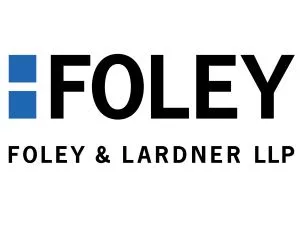- within Criminal Law, Government, Public Sector and Tax topic(s)
Most employers understand, in this era where information moves so quickly and critically sensitive commercial information is very easy to move, that protecting trade secrets is more important than ever. In fact, the U.S. Senate Judiciary Committee reports that annual losses to the American economy caused by trade secret loss are over $300 billion in revenue and 2.1 million in jobs. Against this backdrop, Congress has undertaken recent efforts to enact federal trade secret legislation to impose a federal protection scheme previously left primarily to state law.
Initially, these preliminary efforts at federal legislation were not successful. However, on April 27, 2016, the U.S. House passed the Defend Trade Secrets Act (DTSA) by a vote of 410-2. The DTSA had already passed the Senate and now awaits executive approval, which President Obama has promised to supply. While there are many aspects to this anticipated new law, we focus here on what employers need to know and do in the immediate future.
First, the DTSA creates a federal overlay for the numerous state laws protecting trade secrets. While many states have either directly adopted the Uniform Trade Secrets Act or passed some modified version of it, the DTSA creates a federal enforcement scheme to protect against the loss of intellectual property through trade secret theft.
Second, owners of trade secrets that are misappropriated may now bring a lawsuit against the guilty party directly in federal court. Previously, such trade secret theft had to be litigated under state law, and often took place in state courts (which can lead to varying results depending upon the state in which the suit is pursued) unless federal jurisdiction existed in the form of diversity or supplemental jurisdiction. Under the DTSA, federal actions may allow for the award of certain types of injunctive relief where there is evidence of threatened misappropriation and not merely based on information a former employee knows, seizure of misappropriated trade secrets in extraordinary circumstances, and monetary damages. Monetary damages can include awards for actual loss, unjust enrichment, reasonable royalties, and, in the case of willful and malicious misappropriation, an amount equal to two times the total monetary damages recovered.
Third, employers should know that the reach of the DTSA is broad and comes with potentially significant liabilities, but also places certain responsibilities on trade secret holders. Trade secret issues can arise in everyday hiring and firing of employees, in employer-employee agreements relating to non-disclosure or confidentiality, or discussions by employees with friends, relatives, and business acquaintances. The DTSA also includes a provision requiring employers to give notice to employees, contractors, and consultants of governmental immunity for reporting trade secret theft to the government. If an employer fails to give this notice, it may be subsequently barred from recovering attorney's fees and/or punitive damages in any litigation.
So what does this mean for employers and what should you do now?
- Decide what needs to be protected. Inventory your intellectual property assets to understand what might fall under the definition of Trade Secrets under the DTSA.
- Identify employees with access to the covered trade secrets. Consider putting into place or reinforcing agreements with employees related to confidentiality, non-disclosure, and protection of trade secret information. These agreements should be updated to give notice of governmental immunity for reporting trade secret theft.
- Know your options. In deciding whether (or when) to sue to enforce a confidentiality or non-disclosure agreement that may have been breached, give consideration to whether the DTSA or applicable state law might provide a better remedy. Employers should compare the damages available under the DTSA or state law (as opposed to simple breach of contract claim) and the burdens to successfully establish the claims. Wise employers will generally involve counsel with knowledge of the applicable state trade secret law and the new federal statute to identify which legal scheme provides the employer with better options in a given situation.
The DTSA can be a powerful new tool for employers to protect intellectual property and trade secrets. Now is the time to begin thinking about the best way to use it.
The content of this article is intended to provide a general guide to the subject matter. Specialist advice should be sought about your specific circumstances.


